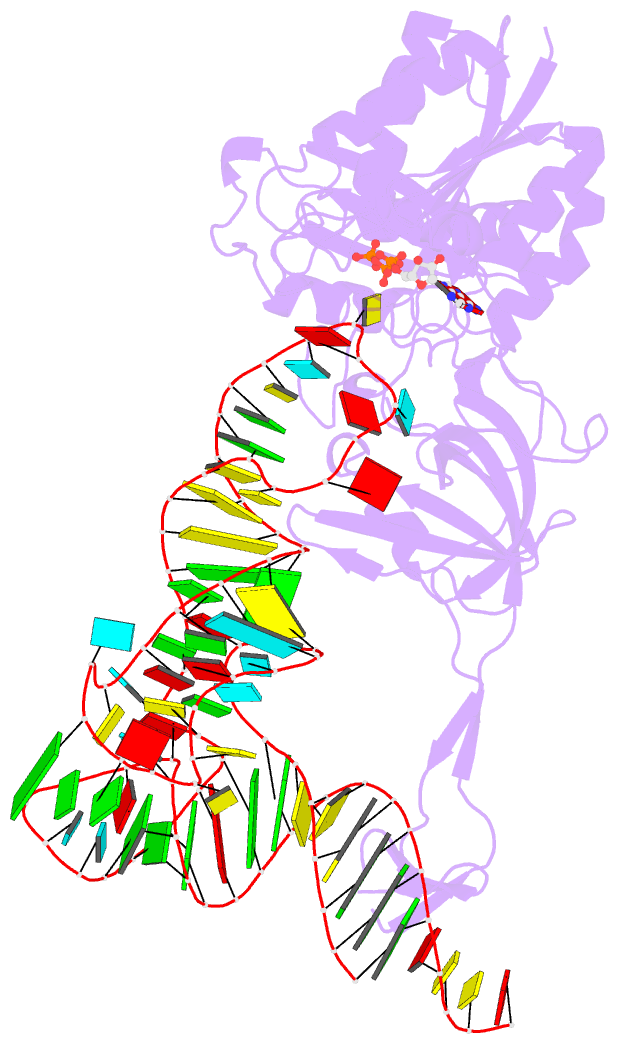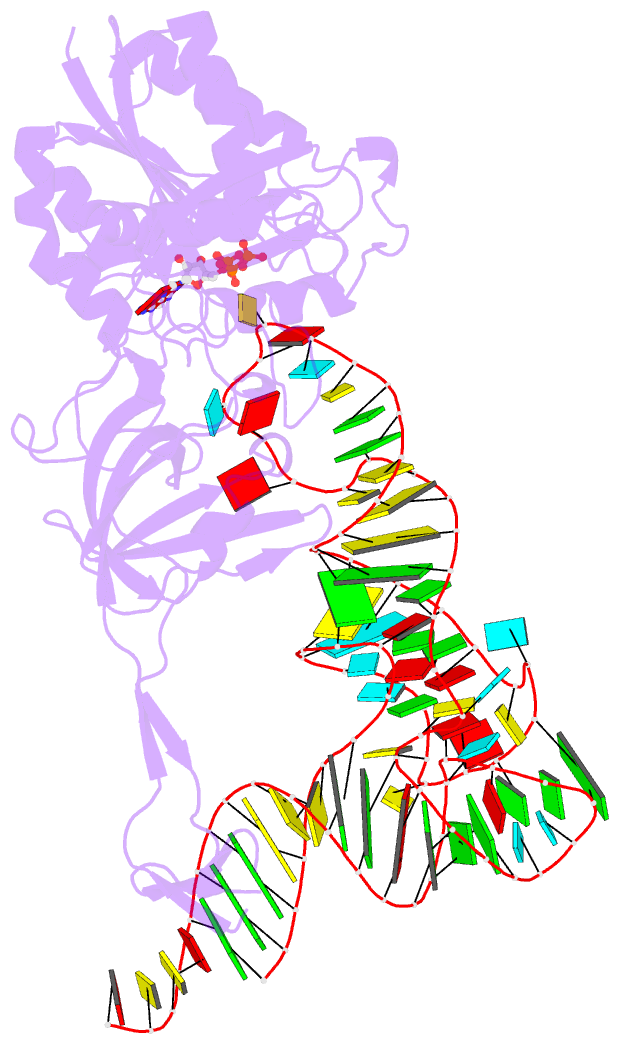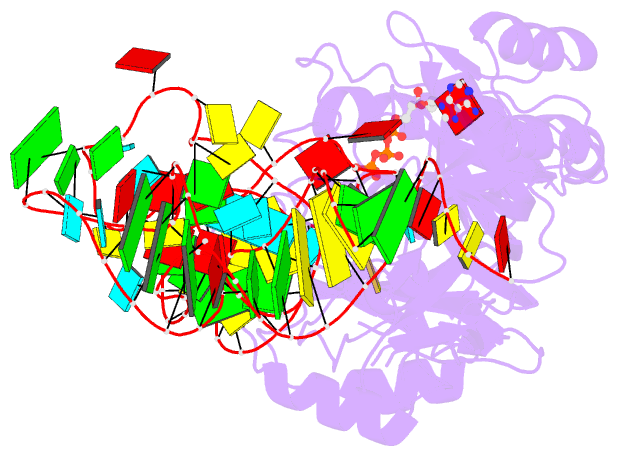Summary information and primary citation
- PDB-id
-
3amt;
DSSR-derived features in text and
JSON formats; DNAproDB
- Class
- RNA binding protein-RNA
- Method
- X-ray (2.9 Å)
- Summary
- Crystal structure of the tias-trna(ile2)-atp
complex
- Reference
-
Osawa T, Kimura S, Terasaka N, Inanaga H, Suzuki T,
Numata T (2011): "Structural
basis of tRNA agmatinylation essential for AUA codon
decoding." Nat.Struct.Mol.Biol.,
18, 1275-1280. doi: 10.1038/nsmb.2144.
- Abstract
- The cytidine at the first position of the anticodon
(C34) in the AUA codon-specific archaeal tRNA(Ile2) is
modified to 2-agmatinylcytidine (agm(2)C or agmatidine), an
agmatine-conjugated cytidine derivative, which is crucial
for the precise decoding of the genetic code. Agm(2)C is
synthesized by tRNA(Ile)-agm(2)C synthetase (TiaS) in an
ATP-dependent manner. Here we present the crystal
structures of the Archaeoglobus fulgidus TiaS-tRNA(Ile2)
complexed with ATP, or with AMPCPP and agmatine, revealing
a previously unknown kinase module required for activating
C34 by phosphorylation, and showing the molecular mechanism
by which TiaS discriminates between tRNA(Ile2) and
tRNA(Met). In the TiaS-tRNA(Ile2)-ATP complex, C34 is
trapped within a pocket far away from the ATP-binding site.
In the agmatine-containing crystals, C34 is located near
the AMPCPP γ-phosphate in the kinase module, demonstrating
that agmatine is essential for placing C34 in the active
site. These observations also provide the structural
dynamics for agm(2)C formation.





